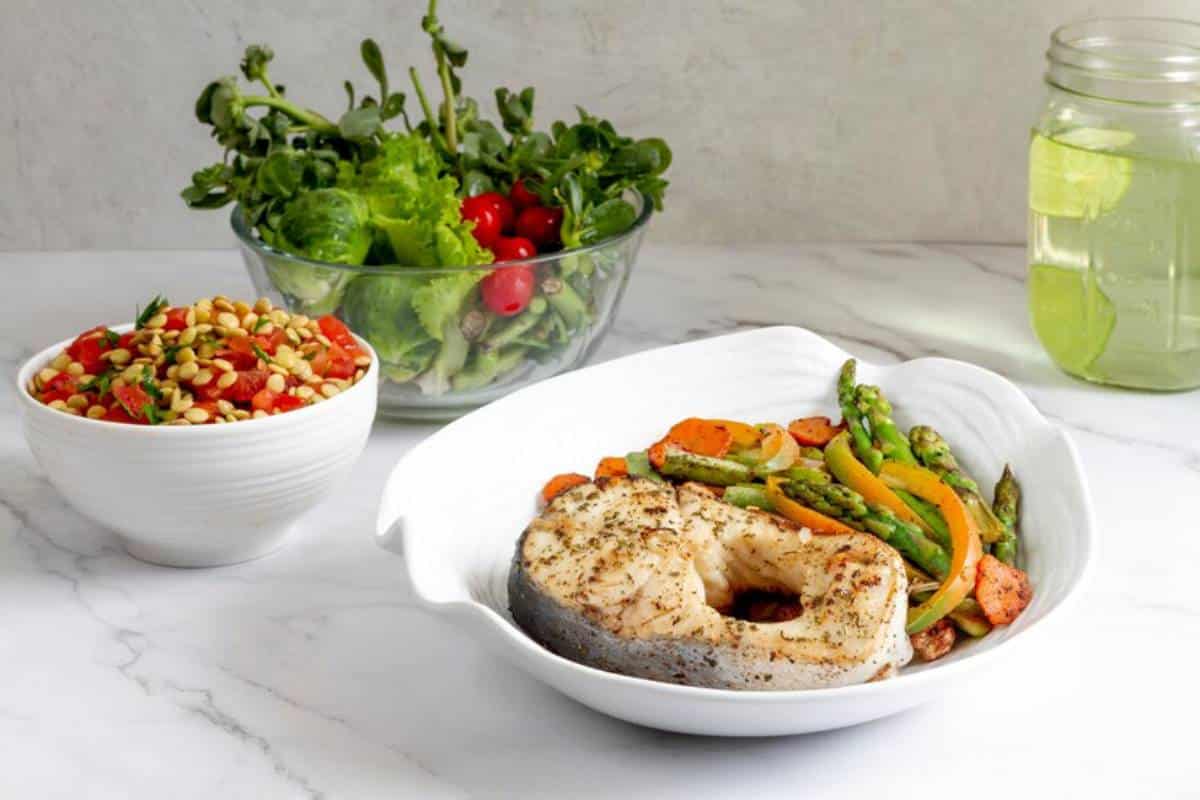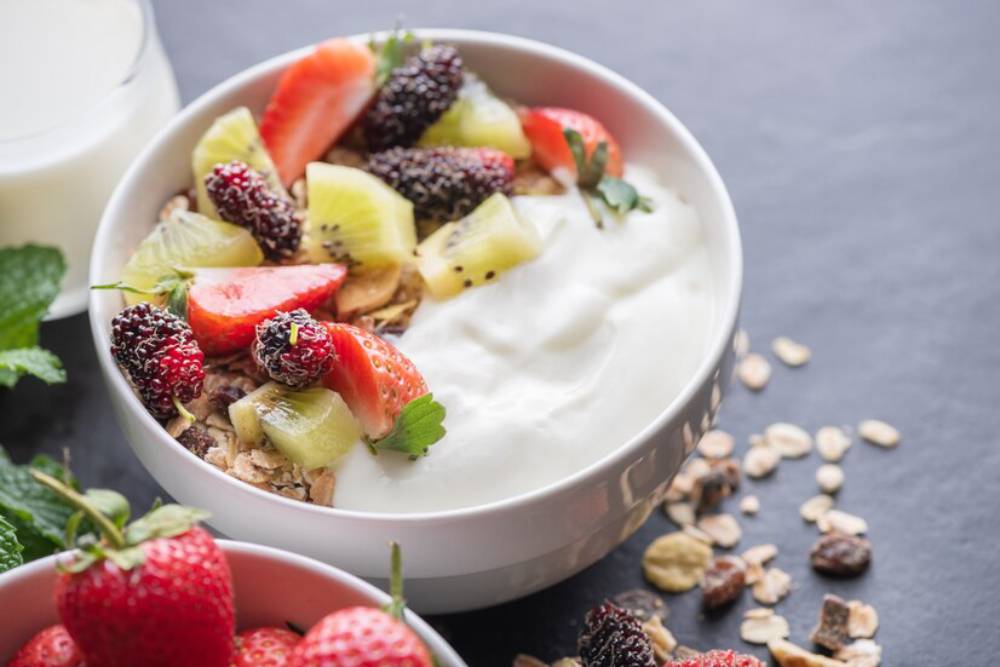
Simple Ingredient Swaps for Healthier Everyday Meals
Eating well doesn’t necessarily mean overhauling your diet. Some occasional subtle tweaks can make your meals more sustaining, energising and satisfying, without added flavour compromises. Good news is that by replacing certain ingredients with healthier versions, you can help your health without sacrificing your favorite foods.
We are going to discuss actionable, evidence-based nutrition hacks that will enable you to create smarter meals at home. These simple swaps are great for anyone who’s looking to up their healthy cooking game and bring real meal upgrades — one bite at a time.
Why Ingredient Swaps Matter
The ingredients you use on a daily basis form the foundation of your overall diet. Even small, repeated choices—like what milk you pour into your coffee or the oil you use to roast vegetables—can significantly impact your energy levels, digestion, and long-term wellness.
Benefits of smart ingredient swaps:
- Reduce added sugar, salt, and unhealthy fats
- Increase fibre, vitamins, and minerals
- Support weight balance and digestive health
- Boost energy and reduce cravings
- Make healthy eating feel simple and sustainable
The goal isn’t perfection—it’s progress. These swaps are about making better choices without giving up the flavours and textures you enjoy.
Baking Swaps: Better Sweets and Treats
White Flour → Whole Wheat or Oat Flour
Whole wheat adds fibre and nutrients, while oat flour offers a gluten-free, heart-healthy alternative.
Use it for: Muffins, pancakes, banana bread
Butter → Unsweetened Applesauce or Greek Yogurt

These add moisture with less fat and fewer calories, plus a boost of protein (in yoghurt’s case).
Use it for: Cakes, brownies, and quick breads
Sugar → Mashed Banana, Dates, or Maple Syrup
Natural sweeteners come with additional nutrients and tend to be lower on the glycaemic index.
Use it for: Smoothies, baked goods, overnight oats
Cooking Swaps: Everyday Kitchen Upgrades
White Rice → Brown Rice, Quinoa, or Cauliflower Rice
These options offer more fibre, protein, and minerals. Quinoa, in particular, is a complete protein.
Use it for: Stir-fries, burrito bowls, side dishes
Cream → Coconut Milk or Cashew Cream
For creamy textures without the heavy saturated fat, plant-based options work wonders.
Use it for: Soups, pasta sauces, curries
Ground Beef → Ground Turkey or Lentils
Turkey is leaner, while lentils provide plant-based protein and fibre.
Use it for: Tacos, spaghetti Bolognese, burgers
Salt → Fresh Herbs and Citrus
Add flavour without extra sodium using lemon juice, garlic, parsley, basil, or dill.
Use it for: Marinades, roasted vegetables, salads
Dairy & Beverage Swaps: Lighter, Smarter Choices
Whole Milk → Unsweetened Almond, Oat, or Soy Milk
These alternatives are lower in calories and often fortified with calcium and vitamin D.
Use it for: Coffee, cereal, smoothies
Flavoured Yogurt → Plain Greek Yogurt with Fruit

Avoid added sugars by sweetening yoghurt naturally. Plus, Greek yoghurt has double the protein.
Use it for: Breakfast, snacks, and dressings
Soda → Sparkling Water with Fresh Fruit
Stay hydrated with fizz and flavour, without the sugar or artificial sweeteners.
Use it for: A refreshing alternative at lunch or with dinner
Snack Swaps: Smarter Munching

Chips → Roasted Chickpeas or Air-Popped Popcorn
These options satisfy crunch cravings with more protein and fibre.
Use it for: Midday snacks or party bowls
Candy Bars → Dark Chocolate or Energy Bites
Dark chocolate offers antioxidants and less sugar, while energy bites are made with whole ingredients like oats and nut butter.
Use it for: Dessert or a sweet pick-me-up
Ice Cream → Frozen Banana “Nice Cream”

Blend frozen bananas for a creamy treat—add cocoa, berries, or peanut butter for variety.
Use it for: Guilt-free dessert that still feels indulgent
Meal Enhancers: Nutrient Boosts Without the Fuss
Croutons → Toasted Seeds or Nuts
Sprinkle sunflower seeds, pumpkin seeds, or chopped almonds on salads for crunch and healthy fats.
Use it for: Salads, soups, grain bowls
Creamy Salad Dressings → Olive Oil & Lemon Vinaigrette
Homemade dressings are easy to make and much lower in preservatives and sugar.
Use it for: Fresh salads or roasted vegetable drizzles
Ketchup → Mashed Avocado or Salsa
Reduce sugar intake by swapping ketchup with avocado for creaminess or salsa for zest.
Use it for: Sandwiches, burgers, or as a dip
Smart Shopping Tips for Healthy Cooking
Success starts at the supermarket. Here’s how to make sure your ingredient swaps work in real life.
- Read labels: Watch for added sugars, sodium, and unpronounceable ingredients
- Shop the perimeter: Fresh produce, dairy, and lean proteins are usually found around the store’s edge
- Buy in bulk: Whole grains, legumes, and nuts are more affordable when bought in larger quantities
- Keep staples on hand: Stock up on olive oil, oats, canned beans, and frozen vegetables for quick meal solutions
A well-stocked kitchen makes healthy cooking easier and more enjoyable.
Making Meal Swaps Stick
Changing how you cook doesn’t have to be all or nothing. Try one or two swaps each week until they become second nature.
Tips to stay consistent:
- Start with what you already eat: Modify familiar recipes rather than starting from scratch
- Batch cook basics: Prepping grains, proteins, and veggies ahead of time helps you stick to healthier choices
- Experiment with flavour: Herbs, spices, and homemade sauces can make nutritious meals just as satisfying
- Track how you feel: Notice improvements in energy, digestion, or sleep after a few weeks of consistent meal upgrades
These small shifts can lead to big results over time—no strict diets are required.
Final Thoughts: Small Changes, Big Impact
You don’t have to give up your favourite foods to change your diet; just make better choices that meet your goals and lifestyle. These simple ingredient swaps make healthy cooking attainable, delicious and sustainable.
So whether you want more energy, manage your weight, or just want to feel better day-to-day, these nutrition hacks are a strong place to start. The best part? They don’t need additional time, effort or fancy tools — just a willingness to try something different.
Because when it comes to health, the simplest meal upgrades often make the biggest difference.


